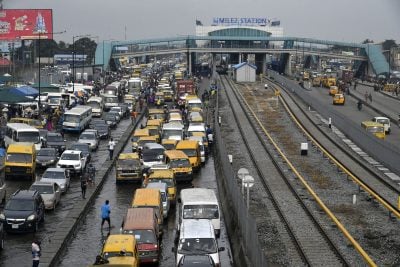As the biggest source of foreign revenue, the tourist sector is obviously of prime importance to the Kenyan economy. In common with all other countries around the world, security alerts and political crises generate bad publicity that can deter visitors but the big question is whether they leave a permanent impression on international opinion.
Kenyan visitor numbers have recovered after several other devastating terrorist attacks over the past 20 years, as well as politically motivated violence, so there is no reason to suppose that the recent shocking attack on the Westgate mall in Nairobi will put off potential tourists in the longer term.
Renaissance Capital of the UK estimated that the attack would reduce 2013 tourist sector revenue by $160m, cutting 0.6% from GDP. Shares in some hotel chains in the country were also affected by it. Alex Kyriakidis, the president for Middle East and Africa at Marriott International, said that he was confident that the attack would not have a long-term impact on the country’s tourist industry and that his firm would proceed with the construction of two new hotels in Nairobi. Indeed, the murder of Briton David Tebbutt and the kidnapping of his wife Judith by a Somali gang at a luxury coastal resort may do just as much as the mall attack to deter visitors.
The violence that claimed about 1,500 lives following the disputed December 2007 elections continues to have some impact because of fears over renewed electoral violence. The Kenya National Bureau of Statistics (KNBS) reported: “The sector’s economic slowdown experienced in the first quarter of 2013 spilled over into the second quarter mainly through low booking by international visitors due to uncertainties over the country’s general elections held in March this year.” However, there is some uncertainty over whether visitors merely decided to travel to Kenya at a different time or opted for a holiday elsewhere in the world. Visitor numbers in the first half of the year were 495,978, 12% lower than during the first half of last year.
Kenya has already demonstrated that it can attract tourists when the global economy is not in the best of health. In the aftermath of the global financial crisis, visitor numbers increased impressively from 1.2m in 2008 to 1.8m in 2011. Revenue per head also rose over that period, as total tourist sector income jumped from KSh53bn ($600m) in 2008 to KSh98bn ($1.1bn) in 2011. The government has set a target of boosting visitor numbers further to 3m by 2017 and is keen to project an image of Kenya as a safe country to visit.
President Uhuru Kenyatta said: “Specifically, we have committed to promote Kenya as a destination, rather than a stopover, and to attract at least 3m tourists annually.” The sector accounts for 10% of GDP and although some lodges and hotels are owned by foreign companies, many Kenyans are employed in the industry in a variety of roles. According to government figures, 9% of all formal employment is in the tourist sector.
Expanding attractions
However, 1.8m visitors is not a high number by the standards of the international tourist industry for a country of Kenya’s size. Moreover, most visitors are concentrated in a relatively small number of areas. As a result, the government launched a new tourist strategy in May that involves promoting the attractions of each region, although the lack of infrastructure will be the main stumbling block to accessing many areas.
While at a conference in the Turkana region, the permanent secretary in the Tourism Ministry, Ruth Solitei, commented: “Not all visitors will access this region through the air; roads need to be repaired as well as accommodation facilities in anticipation of an increase in number of tourists.”
Turkana itself is focusing on its many globally important archaeological sites, such as Kobi Fora, where the remains of early humans have been found. Olduvai Gorge in Tanzania already attracts many people because of its impressive archaeological discoveries. Kenya certainly has a great deal to offer visitors. The country’s various wildlife parks, such as Tsavo and Amboseli, are the biggest draw and are well established among Africa’s top tourist destinations.
Its beaches also attract many people, who are drawn by the sunny weather and warm seas, and indeed the classic Kenyan holiday involves a twin-centre holiday, with at least a week each in a wildlife park and on the coast.
Some visitors also come to hike in the Mount Kenya area or to see the country’s birdlife, although effort needs to be put into promoting walking holidays and other niche interests. In addition, foreign visitors on package holiday often have far too little opportunity for genuine interaction with local people, beyond the often-staged visits to ‘Maasai villages’. Current efforts to make the centre of Mombasa more attractive are designed to entice tourists to spend time in the city. Pavements are being replaced, avenues of trees planted and new public toilets constructed, while local businesses are being encouraged to paint their buildings. The city’s tourism executive Anthony Njaramba said: “We expect the project to turn Mombasa County into a green city.” The Kenyan coast’s Swahili culture and architecture could be an exciting draw if promotions are backed with urban regeneration. In October, the government of Mombasa signed an agreement with Casablanca Council in Morocco to develop tourism in the Kenyan coastal city.
Hamisi Mwaguya, the economic advisor to the governor of Mombasa, said: “We are very keen to work with our Moroccan counterparts to bring out the full potential of Mombasa. This will include emulating their city management plan, infrastructure and structures that have seen them succeed.”
Both Mombasa and Casablanca are port cities in countries where tourists have plenty of better known attractions. However, Casablanca now attracts more than 10m visitors, about 40 times more than Mombasa.
A common approach
The Kenyan tourist industry should also benefit from the introduction of a common East African tourist visa. From January, visitors to Kenya, Rwanda and Uganda will be able to use a single regional visa to move around the area.
Speaking in November, Kenya’s Cabinet Secretary for East African Affairs, Commerce and Tourism, Phyllis Kandie, said: “We have been in discussion over this matter for the last six months and we are proud today to announce that we finally have a joint visa that has made the three countries borderless. This is an opportunity for us to increase tourist numbers as we will jointly offer diversified tourism products.”
She added: “Other EAC [East African Community] members will join us along the way since we have not locked anyone out.”
Tanzania has not yet joined the scheme and indeed the Tanzanian government has complained in the past about the number of tourists staying in Kenya and merely crossing over into Tanzania to visit its wildlife parks. In addition, images of the Tanzanian mountain Kilimanjaro are often used in Kenyan tourist literature to advertise the country.
It may therefore be reluctant to encourage too much cross-border traffic, although a common regional visa could persuade tourists to spend more time in the region, exploring different countries.
On balance, it does not seem that political and terrorist instability will have a big impact on the Kenyan tourist sector. The industry has bounced back from previous terrorist atrocities, although a more concerted series of attacks could do more lasting damage to the sector, particularly if tourists are specifically targeted. The Westgate mall may have attracted a disproportionately high number of foreign visitors but it is not regarded primarily as a tourist destination.
However, the promotion of Kenyan cities as tourist destinations will require the government to tackle violent crime and road safety, which remain more immediate threats to foreign tourists than terrorist attack or political violence.
Neil Ford
Want to continue reading? Subscribe today.
You've read all your free articles for this month! Subscribe now to enjoy full access to our content.
Digital Monthly
£8.00 / month
Receive full unlimited access to our articles, opinions, podcasts and more.
Digital Yearly
£70.00 / year
Our best value offer - save £26 and gain access to all of our digital content for an entire year!
 Sign in with Google
Sign in with Google 


